The History Of Volvo
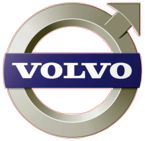
Volvo Cars, or Volvo Personvagnar AB, is a Swedish automobile manufacturer founded in 1927 in the city of Gothenburg, Sweden — and currently owned by Ford Motor Company.
The name Volvo, Latin for "I roll" (or "I drive" in a modern sense), was thought to be a good trademark for a ball bearing as well as for an automobile.
Volvo was originally formed as a subsidiary company to the ball bearing maker SKF. It was not until 1935 when Volvo AB was introduced on the Swedish stock exchange that SKF sold most of the shares in the company. Volvo Cars was owned by AB Volvo until 1999, when it was acquired by the Ford Motor Company as part of its Premier Automotive Group.
Volvo produces models ranging from SUVs, wagons, and sedans to compact executive sedans and coupes. With 2,500 dealerships worldwide in 100 markets; 60 percent of sales come from Europe, 30 percent from North America, and the other 10 percent is from the rest of the world.
Volvo's market share is shrinking in the North American market. However, Volvo increased its market share in new markets such as Russia, China and India.[citation needed] Specifically, Volvo expected sales in Russia to double and exceed 20,000 units by the end of 2007, making Russia one of the ten biggest markets for the company. Volvo already boasts the leading position in Russia's luxury car segment.
Older models were often compared to tractors,[citation needed] partially because Volvo AB was and still is a manufacturer of heavy equipment, earlier Bolinder-Munktell, now Volvo Construction Equipment. Considered by some to be slow and heavy, they earned the distinction "brick" as term of endearment for the classic, block-shaped Volvo, with the more powerful turbo charged variants known as "turbobricks". More recent models have moved away from the boxy styles favored in the 1970s and 1980s and built a reputation for sporting performance, but not before the phenomenal success of factory-supported Volvo 240 turbos winning both the 1985 European Touring Car Championship (ETC) and 1986 Australian Touring Car Championship (ATCC). Most recently a 850 series wagon won top honors at the 1995 British Touring Car Championship (BTCC).
Owners are often proud of achieving prodigious mileages with one well-documented 1966 Volvo P1800S having been driven over 2.6 million miles. According to some figures the average age of a Volvo being discarded is 19.8 years, second only to Mercedes. Reliability is considered better than average and in the USA Volvo dealers are listed by Forbes as the 9th best general car manufacturer and 6th best for luxury cars.
Volvo company came about in Gothenburg, Sweden in the year 1927. The company was founded by SKF as a subsidiary company 100% owned by SKF. Assar Gabrielsson was appointed the managing director and Gustav Larson as the technical manager.
"Cars are driven by people. The guiding principle behind everything we make at Volvo, therefore, is and must remain, safety", Assar Gabrielsson and Gustav Larson 1927.
The trademark Volvo was first registered by SKF the 11th May 1915 with the intention to use it for a special series of ball bearing for the American market, but it was never used for this purpose. SKF trademark as it looks today was used instead for all the SKF-products. Some pre-series of Volvo-bearings stamped with the brand name 'Volvo' were manufactured but was never released to the market and it was not until 1927 that the trademark was used again, now as a trademark and company name for an automobile. The first Volvo car left the assembly line April 14, 1927 was called Volvo ÖV 4. After this the young company produced closed top and cabriolet vehicles, which were designed to hold strong in the Swedish climate and terrain. The Volvo symbol is an ancient chemistry sign for iron. The iron sign is used to symbolize the strength of iron used in the car as Sweden is known for its quality iron. The diagonal line (a strip of metal) across the grille came about to hold the actual symbol, a circle with an arrow, in front of the radiator. In the registration application for Volvo logotype in 1927, they simply made a copy of the entire radiator for ÖV4, viewed from the front.
In 1964 Volvo opened its Torslanda plant in Sweden, which currently is the one of its largest production sites (chiefly large cars and SUV). Then in 1965 the Ghent, Belgium plant was opened, which is the company's second largest production site (chiefly small cars). Finally in 1989 the Uddevalla plant in Sweden was opened, which is now jointly operated by Volvo Car Corporation and Pininfarina of Italy.
A collection of Volvo's most important historical vehicles are now housed a The Volvo Museum, which opened in a permanent location in Arendal at Hisingen on May 30, 1995. For several years, the collection had been housed at "The Blue Hangar," at the then closed Torslanda Airport.
Volvo cars have always evoked a reputation for solidity and reliability.
In 1944, laminated glass was introduced in the PV model. In 1958, Volvo engineer Nils Bohlin invented and patented the modern 3-Point Safety Belt, which became standard on all Volvo cars in 1959. Volvo was the first company to produce cars with padded dashboards starting in late 1956 with their Amazon model.[citation needed] Additionally, Volvo developed the first rear-facing child seat in 1964 and introduced its own booster seat in 1978.
In 1986, Volvo introduced the first central high-mounted stoplight (a brake light not shared with the rear tail lights), which became federally mandated in the United States in the 1986 model year. Seat belt and child seat innovation continued as shown in the 1991 960. The 960 introduced the first three-point seat belt for the middle of the rear seat and a child safety cushion integrated in the middle armrest. Also in 1991 came the introduction of the Side Impact Protection System (SIPS) on the 940/ 960 and 850 models, which channeled the force of a side impact away from the doors and into the safety cage.
To add to its SIPS in 1995 Volvo was the first to introduce side airbags and installed them as standard equipment in all models in 1995. In 1998 Volvo also developed and was the first to install a head protecting airbag,[citation needed] which was made standard in all new models as well as some existing models. The head-protecting airbag was not available on the 1996 C70 due to the initial design deploying the airbag from the roof; the C70, being a convertible, could not accommodate such an airbag. Later years of the C70 featured a head-protecting airbag deploying upwards from the door, negating the issue of roof position. It has been stated by many testing authorities that side head protecting curtain airbags can reduce risk of death in a side impact by up to 40% and brain injury by up to 55%, as well as protecting in a rollover situation.
In 1998, Volvo introduced its Whiplash Protection System (WHIPS), a safety device to prevent injury of front seat users during collisions. In 2004, Volvo introduced the BLIS system, which detects vehicles entering the Volvo's blind spot with a side view mirror mounted sensor and alerts the driver with a light. That year also saw Volvos sold in all markets equipped with side-marker lights and daytime-running lights (the latter having already been available in many markets for some time). Much of Volvo's safety technology now also goes into other Ford vehicles. In 2005 Volvo presented the second generation of Volvo C70, it comes with extra stiff door-mounted inflatable side curtains (the first of its kind in a convertible).[citation needed]
In 2006 Volvo's Personal Car Communicator (PCC) remote control has been launched as an optional feature with the all new Volvo S80. This feature is fairly new to the automotive industry. Before a driver gets to their car, they are able to review the security level and know whether they have set the alarm and if the car is locked.[citation needed] Additionally, a heartbeat sensor warns if someone is hiding inside the car. The heartbeat sensor is rumored to also work with the SOS feature of Volvo's new telematics system.[citation needed] The all new Volvo S80 is also the first Volvo model to feature Adaptive cruise control (ACC) with Collision Warning and Brake Support (CWBS).[citation needed]
By the mid-1990s there was little to distinguish Volvo from some other manufacturers (notably Renault) on safety when put through standardized tests such as Euro NCAP. A 2005 FOLKSAM report puts the 740/ 940 (from 1982 on) in the 15% better than average category, the second from the top category. Also, the production of P1800 had to be stopped because it did not fulfill US safety standards. The Volvo 745 was also recalled due to that the front seatbelts mounts could break in a collision.
Since 2004 all Volvo models except for the C70 and C30 are available with an all wheel drive system developed by Haldex Traction of Sweden.
Even though Volvo Car Corp is owned by the Ford Motor Company, the safety systems of Volvo are still made standard on all of their vehicles. Volvo has patented all of their safety innovations that would include SIPS, WHIPS, ROPS, DSTC, IC, and body structures to name a few. Some of these systems have shown up in other Ford vehicles in related forms to that of Volvo systems only because Volvo has licenced the FOMOCO and other PAG members to utilize these features.[citation needed]
Safety reputation under question
According to Russ Rader, a spokesman for the American non-profit, non-governmental Insurance Institute for Highway Safety, Volvo is lagging behind its competitors. Dan Johnston, a Volvo spokesman, denied that the company's vehicles are any less safe than the Institute's top-rated vehicles, adding that
"It's just a philosophy on safety that is different from building cars to pass these kinds of tests."
According to the IIHS, in recent years Volvo Cars have still managed to maintain their high class safety ratings as seen in test results. The Volvo XC90, S80 and C70 all score top scores in these rated crash tests.
In 2008 a French court found Volvo guilty of causing the death of two children and serious injuries of one in Wasselonne on June 17, 1999, when the brakes of a 1996 Volvo 850 failed. The court found Volvo partially responsible for the accident, and sentenced Volvo to a 200,000 Euro fine.
Safety milestones
- 1944 Safety cage
- 1944 Laminated windscreen
- 1954 Defroster vents for windscreen
- 1956 Windscreen washers
- 1957 Anchor points for 2–point safety belts front
- 1958 Anchor points for 2–point safety belts rear
- 1959 3–point front safety belts standard
- 1960 Padded instrument panel
- 1964 First rearward–facing child safety seat prototype tested
- 1966 Crumple zones front and rear
- 1966 Safety door–locks
- 1967 Safety belt rear seats
- 1969 Inertia reel safety belts
- 1971 Reminder safety belt
- 1972 3–point safety belts – rear
- 1972 Rearward–facing child safety seat
- 1972 Childproof locks on rear doors
- 1974 Multistage impact absorbing steering column
- 1974 Bulb integrity sensor
- 1975 Braking system with stepped bore master cylinder
- 1978 Child safety booster cushion
- 1982 "Anti–submarining" protection
- 1986 Three–point safety belt centre rear seat
- 1990 Integrated child safety cushion in centre rear seat
- 1991 SIPS – Side Impact Protection System
- 1991 Automatic height adjusting safety belt
- 1992 Reinforced rear seats in estate models
- 1995 Integrated child safety cushion outer rear seats
- 1997 ROPS – Roll Over Protection System (C70)
- 1998 WHIPS – Whiplash Protection System
- 1998 IC – Inflatable Curtain
- 2001 SCC – Volvo Safety Concept Car
- 2002 RSC – Roll Stability Control
- 2003 New Front Structure called Volvo Intelligent Vehicle Architecture (VIVA) (S40, V50)
- 2003 Rear seat belt reminders (in S40 and V50)
- 2003 IDIS – Intelligent Driver Information System (in S40 and V50)
- 2003 Inauguration of Volvo's Traffic Accident Research Team in Bangkok
- 2004 BLIS – Blind Spot Information System (in S40 and V50)
- 2005 Introduction of DMIC (Door Mounted Inflatable Curtain) (new Volvo C70)
- 2006 PCC - Personal Car Communicator (S80)
- 2006 CWBS - Collision Warning with Brake Support (S80)
- 2007 PPB - Power Park Brake (S80)
- 2007 DAC - Driver Alert Control (V70, XC70)
In the early 1970s, Volvo acquired the passenger car division of the Dutch company DAF, and marketed their small cars as Volvos before releasing the Dutch-built Volvo 340, which went on to be one of the biggest-selling cars in the UK market in the 1980s.
Volvo Group, as one of the largest manufacturers of commercial vehicles in the world, took the initiative to sell its automobile manufacturing in 1998 in order to fully focus its efforts on the market for commercial vehicles.
Ford, on the other hand, saw advantages in acquiring a profitable prestige mid-size European automobile manufacturer, well renowned for its safety aspects, as an addition to its Premier Automotive Group. The buyout of Volvo Cars was announced on January 28, 1998, and in the following year the acquisition was completed at a price of $6.45 billion USD.
As a result of the divestiture, the Volvo trademark is now utilized by two separate companies:
- Volvo Group - a manufacturer of commercial vehicles, etc. owned by Swedish interests.
- Volvo Cars - a manufacturer of automobiles owned by Ford Motor Company, in its Premier Automotive Group (PAG).
Corporate history within Ford
Volvo Car Corporation is part of Ford Motor Company's Premier Automotive Group (PAG). It is the only brand left in the group since the sale of Jaguar, Aston Martin and Land Rover. Since its acquisition into the PAG, the company has grown in its range of vehicles. After the sale of JLR to Tata of India, Ford decided to keep Volvo Cars despite mounting losses and gross economic down turns. Ford decided to restructure plans for Volvo Cars, pushing it further upmarket alongside the lower end of Mercedes and BMW sedans, wagons, and SUV crossovers. This turnaround was quite evident with the luxurious second generation Volvo S80 and the new small premium crossover Volvo XC60. Recently, there were talks about what to do with Volvo Cars in the event of a market failure with US automakers that would include parent FOMOCO. Swedish interest mounted their concerns after repeated mass layoffs at Volvo, expressing that Sweden needs to enter the spotlight to help its automotive industry. The government was asked to look into a possible state ownership of Volvo, or financing Volvo Cars and SAAB of GM. Eventually AB Volvo responded to heated talks and decided that they do not want to see Volvo Cars fail, so they agreed to help Volvo cut costs through parternships and even a possible share ownership amongst a larger consortium. AB Volvo repeated and stood stern that they will not buy back Volvo cars nor be sole majority owner. They are only willing to become part share owner of the once car unit. FOMOCO announced in December 2008 that it is now considering a sale of the Volvo Cars unit through complex evaluations, but meanwhile it will try to make Volvo a more stand alone company. The Swedish government is now willing to help with a possible Swedish aquisiton of Volvo Cars in the near future along with AB Volvo. No suitors have shown interest in a possible purchase as yet but it is believed that BMW AG of Germany, Investor AB of Sweden, Chinese investors,or Russian investors are all possible candidates. Ultimately it will not be a price issue for the new owner but rather whom Volvo Cars prefer to take over, AB Volvo decides to release name trademark too, and Ford feels will have FOMOCO and Volvo's best interest.
Volvo ReCharge is a plug-in hybrid concept car, with 60miles (97km) of all-electric range (AER), has been unveiled officially at the 2007 Frankfurt Auto Show.
Volvo entered the European Touring Car Championship with the Volvo 240 in the mid-80s. The cars also entered the Guia Race, part of the Macau Grand Prix in 1985, 1986 and 1987, winning in both 1985 and 1986.
Volvo also entered the British Touring Car Championship in the 90s with Tom Walkinshaw Racing. This partnership was responsible for the controversial 850 Estate racing car, which was only rendered uncompetitive when the FIA allowed the use of aerodynamic aids in 1995. TWR then built and ran the works 850 Saloon, six wins in 1995 and five wins in 1996, and S40, one wins in 1997 in the BTCC. In 1998, TWR Volvo won the British Touring Car Championship with Rickard Rydell driving the S40R.
The Volvo trademark is now jointly owned (50/ 50) by Volvo Group and Volvo Car Corporation. One of the main promotional activities for the brand is the sailing Race Volvo Ocean Race, formerly known as the Whitbread Around the World Race. There is also a Volvo Baltic Race and Volvo Pacific Race, and Volvo likes to encourage its affluent image by sponsoring golf tournaments all over the world including major championship events called the Volvo Masters and Volvo China Open.
Volvo sponsored the Volvo Ocean Race, the world’s leading round-the-world yacht race for the first time in 2001 – 2002. The current edition is taking place between October 4, 2008 and June 27, 2009. Volvo has also had a long-standing commitment to the ISAF and is involved in the Volvo/ ISAF World Youth Sailing Championships since 1997.
Early years
- Volvo ÖV 4, aka Jakob
- Volvo PV (PV444 and PV544)
- Volvo Snabbe
- Volvo Trygge
- Volvo Sugga (civilian (PV801, PV802, PV810, PV821, PV822 and PV831) and military (TP21/ P2104, P2104))
- Volvo Laplander (L-3304, L-3314, L-3314 and L-3315)
- Volvo PV 36 Carioca
- Volvo PV51
- Volvo PV60
- Volvo Duett
- Volvo Amazon/ Volvo 122
- Volvo P1800
- Volvo P1900
- Volvo 66
- Volvo C202
- Volvo C3-series (C303, C304 and C306)
Tri-digit nomenclature
Starting with the 140 series in 1968, Volvo used a tri-digit system for their cars. The first number was the series, the second number the number of cylinders and the third number the number of doors; so a 164 was a 1-series with a 6-cylinder engine and 4 doors. However, there were exceptions to this rule—the 780 for example, came with turbocharged I4 and naturally-aspirated V6 petrol engines and I6 diesel engines, but never an eight cylinder as the 8 would suggest. Similarly, the 760 often was equipped with a turbocharged I4 engine and the Volvo 360 only had four cylinders. Some 240GLT had a V6 engine. The company dropped the meaning of the final digit for later cars like the 740, but the digit continued to identify cars underhood on the identification plate. Volvo Vehicle Identification Numbers (VIN codes) had always been given YV1 symbolizing Sweden, Volvo, and Volvo Car Corp
- Volvo 140 (Volvo 142, Volvo 144, Volvo 145)
- Volvo 164
- Volvo 240 (Volvo 242, 244, 245)
- Volvo 260 (Volvo 262C, 264, 265)
- Volvo 340 (Volvo 343, 345)
- Volvo 360
- Volvo 440
- Volvo 460
- Volvo 480
- Volvo 740
- Volvo 760
- Volvo 780
- Volvo 850
- Volvo 940
- Volvo 960
Current models
Today, the company uses a system of letters denoting body style followed by the series number. S stands for saloon or sedan, C stands for coupé or convertible and V stands for vagen the swedish for Wagon estate car. XC stands for cross country originally added to a more rugged V70 model as the V70XC and indicates all wheel drive paired with a raised suspension to give it a mock SUV look. Volvo would later change the name to the XC70 in keeping with its car naming consistent with the XC90. So a V50 is an estate ("V") that is smaller than the V70.
Originally, Volvo was planning a different naming scheme. S and C were to be the same, but "F", standing for flexibility, was to be used on station wagons. When Volvo introduced the first generation S40 and V40 at Frankfurt in 1994, they were announced as the S4 and F4. However, Audi complained that it had inherent rights to the S4 name, since it names its sporty vehicles "S", and the yet-introduced sport version of the Audi A4 would have the S4 name. Volvo agreed to add a second digit, so the vehicles became the S40 and F40. However, that led to a complaint from Ferrari, who used the Ferrari F40 name on their legendary sports car. This led to Volvo switching the "F" to "V", for versatile.
- Pre-Ford
- Volvo S/ V40 (M/ Y 1996-2004)
- Volvo S/ V70 (M/ Y 1997-2000)
- Volvo C70 (M/ Y 1997-2005)
- S/ V90 (M/ Y 1991-1998)
- Small cars (Volvo P1 platform)
- Volvo C30 (M/ Y 2007- )
- Volvo C70 (M/ Y 2005- )
- Volvo S40 (M/ Y 2004- )
- Volvo V50 (M/ Y 2004- )
- Large cars (Volvo P2 platform)
- Volvo S60 (M/ Y 2001- )
- Volvo S80 (M/ Y 1999-2006)
- Volvo V70 (M/ Y 2000-2007)
- Volvo XC70 (M/ Y 2001-2007)
- Volvo XC90 (M/ Y 2003- )
- Large Cars (Volvo Y2 platform)
- Volvo S80 (M/ Y 2007- )
- Volvo V70 (M/ Y 2008- )
- Volvo XC60 (M/ Y 2009- )
- Volvo XC70 (M/ Y 2008- )
Concept cars
- Volvo Venus Bilo (1933)
- Volvo Philip (1952)
- Volvo Margarete Rose (1953)
- Volvo Elisabeth I (1953)
- Volvo VESC (1972)
- Volvo 1800 ESC (1972)
- Volvo EC (1977)
- Volvo City Taxi (1977)
- Volvo Tundra (1979)
- Volvo VCC (1980)
- Volvo LCP2000 (1983)
- Volvo ECC (1992)
- Volvo SCC (2001)
- Volvo YCC (2004)
- Volvo T6 (2005)
- Volvo XC60 (2006)(now being produced)
- Gothenburg, Sweden (Volvo Car Headquarters and Safety Center)
- Hällered, Sweden Volvo Test Track
- Torslanda, Sweden (Volvo Torslanda Plant, Torslandaverken) 1964- Present
- Volvo XC90, Volvo S80, Volvo V70, Volvo XC70
- Uddevalla, Sweden 1989, since 2005 the factory is operated by Volvo Cars and Pininfarina Sverige AB
- Volvo C70
- Ghent, Belgium 1965-
- Volvo S60, Volvo S40, Volvo V50, Volvo C30, Volvo XC60
- Skövde, Sweden (engines)
- Floby, Sweden (Brakes)
- Köping, Sweden (Transmissions developed with Getrag GmbH and AWD system development with Haldex Traction AB)
- Olofström, Sweden (Body Components)
Assembly locations around the world:
- Kuala Lumpur, Malaysia (Swedish Motor Assemblies SDN BHD)
- Bangkok, Thailand (Thai-Swedish Assembly Company Limited)
- China (the Volvo S40 and the Volvo S80 LWB are produced in Ford's Chinese plant for the local market)
Volvo Cars have previously had production facilities on these locations:
- Pretoria, South Africa (Production cancelled in 2006 due to disputes in trade agreements between the EU and South Africa as well as decreased demand).
- Born, The Netherlands (NedCar, fka Volvo Car B.V.) (1972-2004)
- Halifax, Canada (Volvo Halifax Assembly)
- Kalmar, Sweden (1972-1994)
Volvo uses in-line, or straight engines in their production vehicles. Volvo is also known for the application of the in-line 5-cylinder engine to its vehicle line up since its introduction in 1993 in the Volvo 850.
See also: List of Volvo engines- Side valve six - fitted into the PV651/ 2, TR671/ 4, PV653/ 4, TR676/ 9, PV658/ 9, PV36, PV51/ 2, PV53/ 6, PV801/ 2, PV821/ 2, PV831/ 2 and PV60 from 1929 to 1958
- B4B and B14A - fitted into the Volvo PV and Volvo Duett from 1947 to 1956
- B16 (A and B) - fitted into the PV, Duett and Volvo Amazon from 1957 to 1960
- B18 and B20 - 1.8L/ 2.0L OHV 8v fitted into all Volvo models from 1961 to 1974 except 164 (and 1975 U.S. Spec 240 models).
- B19, B21, and B23 - fitted from 1975
- B200 and B230 - 2.0L and 2.3L, respectively, SOHC 8v fitted to 240, 360, 700, 940 series cars from 1985
- B204 and B234 - 2.0L and 2.3L DOHC 16 valve engines
- B27/ B28 and B280- 2.7 and 2.8L SOHC 12v developed together with Renault and Peugeot
- B30 - fitted to all 164 models
Volvo transmissions in the past were made by the ZF Friedrichshafen company, but now the transmissions are co-developed with Aisin of Japan. Geartronic is Volvo Cars' name for its manumatic transmission.
- Volvo AW70 transmission
- Volvo AW71 transmission
- Volvo AW72 transmission
- Volvo M30 transmission
- Volvo M40 transmission
- Volvo M400 transmission
- Volvo M410 transmission
- Volvo M41 transmission
- Volvo M45 transmission
- Volvo M46 transmission
- Volvo M47 transmission
- Volvo M50 transmission
- Volvo M51 transmission
- Volvo M56 transmission
- Volvo M58 transmission
- Volvo M59 transmission
- Volvo M66
- Volvo M90 transmission
- Volvo ZF4HP22 transmission[citation needed]
- AW50-42 (4-speed automatic, FWD/ AWD)
- AW55-50/ 51 (5-speed automatic, FWD/ AWD)
- GM4T65EV/ GT(4-Speed GM automatic, FWD/ AWD)
- AWTF80-SC (6-speed automatic, FWD/ AWD)
Volvo Cars sales during 2007 (2006).
Source: Volvo Cars
By market
1. United States 106,125 (115,818) 2. Sweden 62,229 (55,455) 3. Germany 32,329 (35,626) 4. United Kingdom 30,003 (30,512) 5. Russia 21,077 (10,803) 6. Italy 20,290 (17,554) 7. Netherlands 20,253 (16,607) 8. Spain 18,400 (18,247) 9. Belgium 13,991 (11,844) 10. France 13,497 (10,726)
All markets: 458,323 (427,747)
By model
1. XC90 79,140 2. V70 69,067 3. S40 63,062 4. V50 62,348 5. C30 46,726 6. S80 41,839 7. S60 41,726 8. XC70 36,279 9. C70 17,415
From Wikipedia, the free encyclopedia
More About Volvo
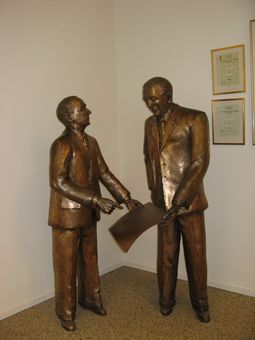
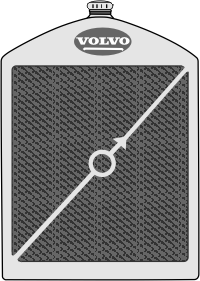
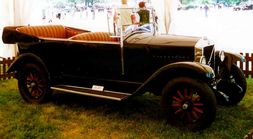
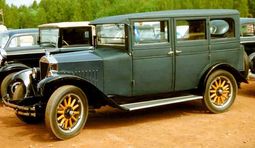
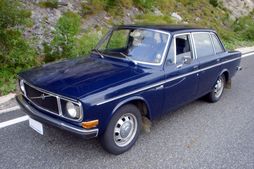
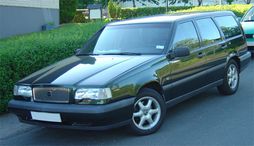
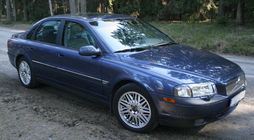
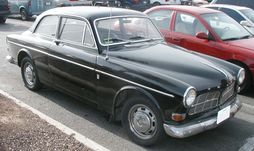
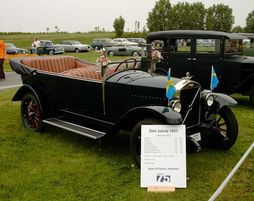
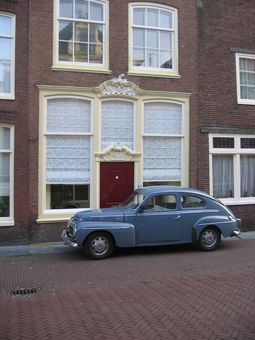
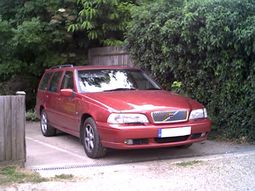
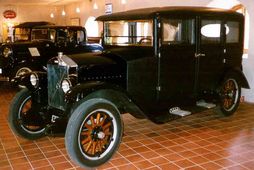
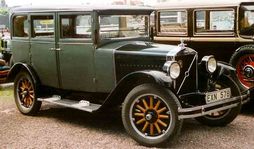
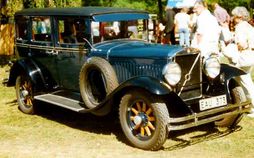
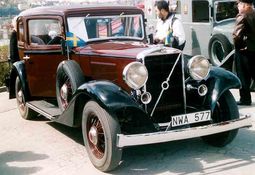
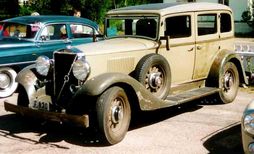
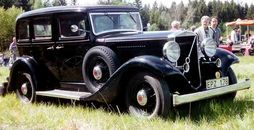
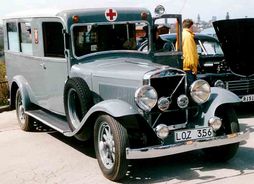
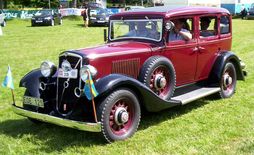
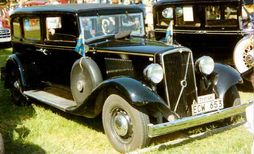
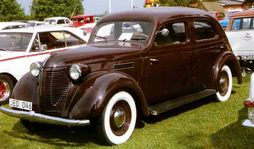
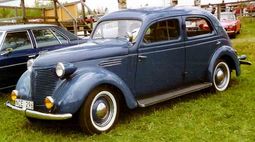
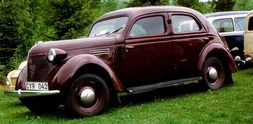
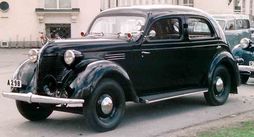
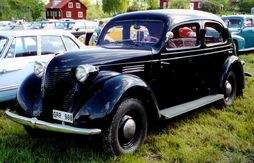
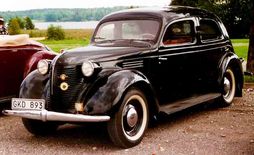
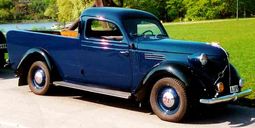
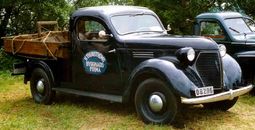
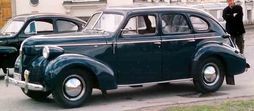
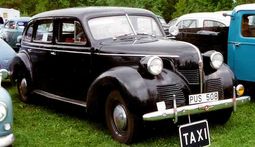
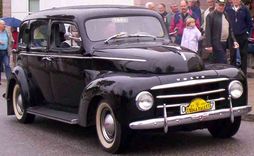
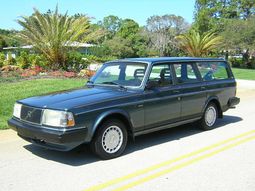
|